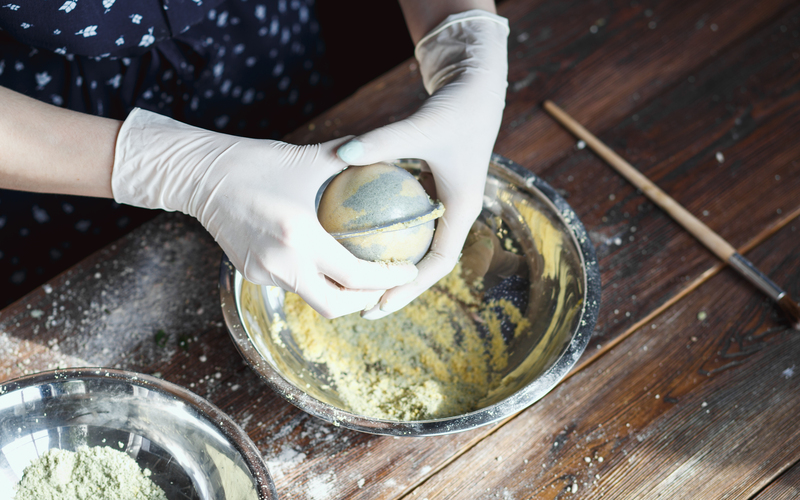Effective Methods to Clear Mould Off Your Window Sills
Posted on 25/09/2025
Effective Methods to Clear Mould Off Your Window Sills
Mould infestations on window sills are not just unsightly--they can also pose serious health risks and cause lasting damage to your home's structure. If you've discovered black spots, green stains, or fuzzy growths appearing along your window frames, it's time to take action. In this comprehensive guide, you'll learn the most effective ways to remove mould from window sills, prevent regrowth, and maintain a healthy indoor environment.

Understanding Window Sill Mould: Causes and Hazards
Before diving into methods for removing mould from window sills, it's crucial to understand how these outbreaks occur.
What Causes Mould on Window Sills?
- Condensation: Poor insulation and temperature differences between indoors and outdoors lead to water droplets accumulating on window panes and frames.
- Poor Ventilation: Humidity from bathrooms, kitchens, and even everyday activities like cooking and drying clothes can raise moisture levels indoors, increasing the risk of mildew.
- Leaky Windows: Damaged seals or improper installation allow rainwater to seep in, creating ideal conditions for mould growth on wood and uPVC sills.
Why Is Mould Removal Essential?
- Health Concerns: Exposure to mould spores can trigger allergies, asthma attacks, and respiratory issues in sensitive individuals.
- Structural Damage: Prolonged mould infestations can break down paints, stain wood, and even corrode metal window frames.
- Reduced Home Value: Unsightly black or greenish stains tarnish the appearance of your home and negatively affect property value.
Now that you know why window sill mould is a problem, let's explore the best ways to eradicate it.
Preparation: Safety First When Removing Mould from Window Sills
Removing mould, especially large outbreaks, can expose you to spores and cleaning chemicals. Prioritize your safety with these steps:
- Wear protective gear: Equip yourself with gloves, goggles, and a mask (preferably an N95 or better).
- Ventilate the area: Open nearby windows and doors, and use a fan if possible, directing air outside to avoid dispersing spores indoors.
- Shield surrounding areas: Lay down old towels or plastic sheeting to catch drips and debris.
If the affected area exceeds one square metre or you have recurring health symptoms, consult a professional mould removal specialist.
Proven Methods to Remove Mould from Window Sills
1. Cleaning Mould with Household Vinegar
White vinegar is a natural, non-toxic cleaner capable of killing up to 82% of mould species. Here's how to use vinegar to eliminate mildew from your window ledges:
- Fill a spray bottle with undiluted white vinegar.
- Spray generously over the mouldy window sill areas.
- Allow the vinegar to sit for at least 1 hour.
- Scrub thoroughly using a rough sponge or scrubbing brush.
- Wipe clean with a damp cloth and dry the area completely.
Repeat if needed for stubborn stains. The strong odour of vinegar disappears as it dries, leaving your window sills fresh and fungus-free.
2. Using Baking Soda to Eliminate Mould
Baking soda is a gentle abrasive and a natural odour neutralizer. It's especially useful for delicate or painted window sills.
- Mix one tablespoon of baking soda with two cups of water in a spray bottle.
- Shake and spray onto the affected areas.
- Scrub with a soft brush and wipe away with a damp cloth.
- Spray the area again and let it air dry to prevent future growth.
This method is ideal for routine maintenance or light outbreaks of mould on uPVC or wooden window sills.
3. Hydrogen Peroxide: For Stubborn and Black Mould
Hydrogen peroxide is a powerful disinfectant and an effective solution for killing black mould and other tough fungi.
- Pour 3% hydrogen peroxide into a spray bottle (undiluted).
- Saturate the affected window sills.
- Let it stand for 10-15 minutes.
- Scrub the surface to break up the mould.
- Rinse with damp cloth and dry thoroughly.
*Note: Always wear gloves and test on a small inconspicuous area first, as hydrogen peroxide may bleach painted surfaces.*
4. Commercial Mould Cleaners for Window Sills
For severe cases, specialized mould and mildew removers may be required. Look for products labeled 'mould remover' or 'anti-mould spray' for bathroom or household use.
- Follow the manufacturer's instructions closely.
- Keep the room ventilated as these products may contain strong chemicals.
Commercial products can be particularly effective for persistent growth on silicone, grout, or caulking around window frames.
5. Tea Tree Oil Solution: A Natural Antifungal Remedy
- Mix one teaspoon of tea tree oil with one cup of water in a spray bottle.
- Shake and spray the solution onto the mouldy window sill.
- Leave for 30-60 minutes.
- Wipe away with a clean, damp cloth.
Tea tree oil is a powerful natural fungicide. Its scent may linger but will fade with time, leaving your window sills fresh and protected.
6. Soap and Water for Light Mould on Painted Surfaces
For minor mould outbreaks on your window ledges, especially on painted surfaces, warm soapy water can suffice:
- Mix mild washing up liquid and warm water.
- Use a sponge or cloth to gently scrub the surface.
- Dry thoroughly to prevent the recurrence of mould.
Best Practices to Prevent Mould from Returning
Once you've successfully cleared mould off your window sills, don't stop there. Implement these habits to keep your window sills free from future mould growth:
- Improve indoor ventilation: Open windows regularly or install trickle vents.
- Use dehumidifiers: Keep relative humidity below 60%, especially in winter months.
- Repair leaks: Fix any gaps, cracks, or damaged seals to prevent water from entering window frames.
- Frequent cleaning: Wipe down window sills and frames regularly, especially after condensation.
- Repaint with mould-resistant paint: If you have wooden sills, repaint every few years with anti-mould paint for added protection.
A consistent maintenance routine is crucial for ensuring your window sills remain mould-free.
Treating Special Window Sill Materials
Different materials react differently to cleaning agents. Here's how to take care of:
- Wooden window sills: Avoid soaking wood. Use vinegar or baking soda, follow up with drying, and oil or repaint as needed.
- uPVC window sills: Vinegar, baking soda, or hydrogen peroxide are safe, but avoid abrasives that cause scratches.
- Aluminium or metal sills: Use commercial anti-mould sprays; rinse thoroughly to avoid corrosion.
When to Call a Professional Mould Remediation Service
If you notice:
- Large areas (over 1 square metre) affected by mould
- A persistent musty smell, even after cleaning
- Recurrence of mould despite prevention methods
- Visible health symptoms, such as coughing, sneezing, or skin irritation
it's time to contact an expert. Mould remediation professionals have advanced tools to safely and effectively eradicate deep-set mould problems, protecting your property and your health.

Frequently Asked Questions About Clearing Mould off Window Sills
Is bleach safe for window sill mould removal?
While bleach is often recommended, it does not fully penetrate porous surfaces like wood and may simply bleach visible stains on the surface. Safer alternatives such as vinegar or hydrogen peroxide are more effective for household use.
Can I paint over mould to fix the problem?
Painting over mould will not resolve the issue and can trap moisture, leading to ongoing damage and health risks. Always remove all traces of mould and dry the area completely before repainting.
How do I know if the mould is dangerous?
Black mould (Stachybotrys chartarum) and green moulds are more likely to trigger allergies. If you have a large outbreak, recurring issues, or household members with sensitivities, consult a mould specialist.
Final Thoughts: Keeping Your Window Sills Mould-Free
Clearing mould from your window sills doesn't have to be an overwhelming chore. By following tried-and-tested methods--from natural solutions like vinegar and baking soda to robust commercial products--and implementing proper housekeeping practices, you'll enjoy fresh, healthy window frames year-round.
If you encounter persistent outbreaks, prioritize your health by consulting mould remediation professionals. Remember: prompt action and regular care are the keys to keeping your window sills clear of mould and your indoor air fresh and safe.
- Pin this guide for quick reference whenever mould returns.
- Share with friends who want to keep their homes mould-free.
If you have any tips or personal experiences with removing or preventing mould from window sills, let us know in the comments below!




